Comparison of Sales Export Modules for Magento 2
As a Magento 2 store owner, managing and analyzing your sales data is crucial for making informed business decisions. Magento 2 provides some built-in export functionalities, but they are limited in their capabilities. You can only export in CSV or XML format and are not able to define any adaptions of the given data. You simply get the content of the current grid view of the chosen entity. This way, you don’t have any preview functionality and can only filter as you would usually do in the grid. Also ,there are no automations in place, so you can not schedule exports to be run automatically. Additionally, you can not define any custom export destination, you can only download the file directly. Using a dedicated sales export modules will give you more flexibility and possibilities to export your data. In this blog post, we will take an in-depth look at some of the Magento 2 sales export modules, comparing their features, functionalities, and ease of use. We do not want to create a ranking of the modules, but rather give an overview of the functionalities, so you can decide which module fits your needs best. In our post, we will compare the following modules1:
- Amasty Export Orders
- Fooman Export Orders
- Mageplaza Sales Exporter
- Wyomind Advanced Data Export
- XTENTO Order Export
Let’s now take a look into the main features, a sales export module needs to have to be useful for you:
Export Formats
One important thing to check is surely the possible export formats.
While all the modules support CSV, they differ in the other formats they support.
| CSV | XML | Excel /XLSX | TXT | TSV | JSON | SQL | |
|---|---|---|---|---|---|---|---|
| Amasty | ✓ | ✓ | ✓ | ✓ | |||
| Fooman | ✓ | ✓ | |||||
| Mageplaza | ✓ | ✓ | ✓ | ✓ | ✓ | ✓ | |
| Wyomind | ✓ | ✓ | ✓ | ✓ | |||
| XTENTO | ✓ | ✓ | ✓ | ✓ | ✓ | ✓ | ✓ |
As you can see, XTENTO supports a variety of different formats, whereas Amasty and Mageplaza support the most common ones. Fooman specialized on CSV and Excel exports.
Export Entities
| Orders | Invoices | Shipments | Credit Memos | Customer Data | Sold Products | |
|---|---|---|---|---|---|---|
| Amasty | ✓ | ✓ | ✓ | ✓ | ✓ | ✓ |
| Fooman | ✓ | |||||
| Mageplaza | ✓ | ✓ | ✓ | ✓ | ✓ | ✓ |
| Wyomind | ✓ | ✓ | ✓ | ✓ | ✓ | ✓ |
| XTENTO | ✓ | ✓ | ✓ | ✓ | ✓ | ✓ |
In this section you can see, that most of the modules support a wide range of data which can be exported. Only Fooman focuses completely on orders to keep the module clean and small.
Export Definition
Amasty offers a simple yet effective way to define export configurations in a pretty user-friendly way. You can choose fields from a variety of different Magento entities and also modify the output format by pre-defined modifiers. It is even possible to add custom modifiers. These definitions can all be done via drag and drop and choosing data directly via checkboxes.
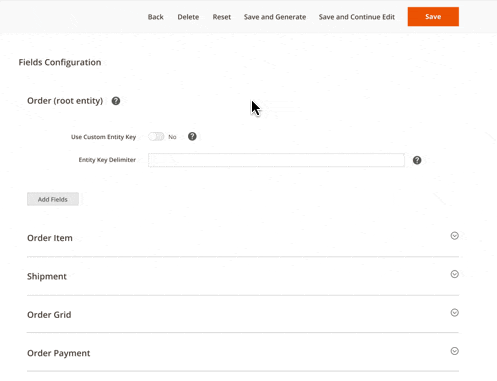
As Fooman concentrates solely on exporting order data, users can quickly set up export profiles directly in the order grid. There is not much complex configuration needed: You simply choose the columns you would like to export, adapt the column headers, and you are ready to go.
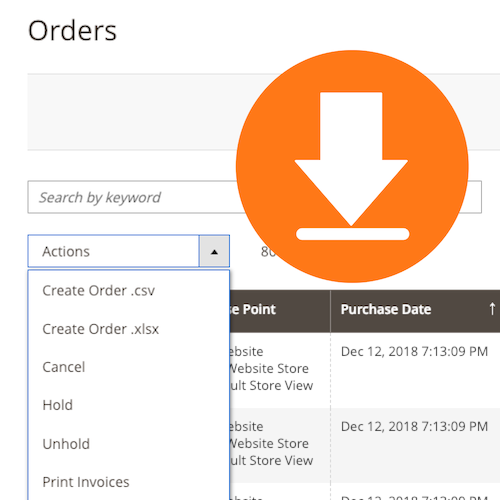
Mageplaza has a similar approach like Amasty to define the export format. You can select the fields you want to export and also modify the output format by pre-defined modifiers.
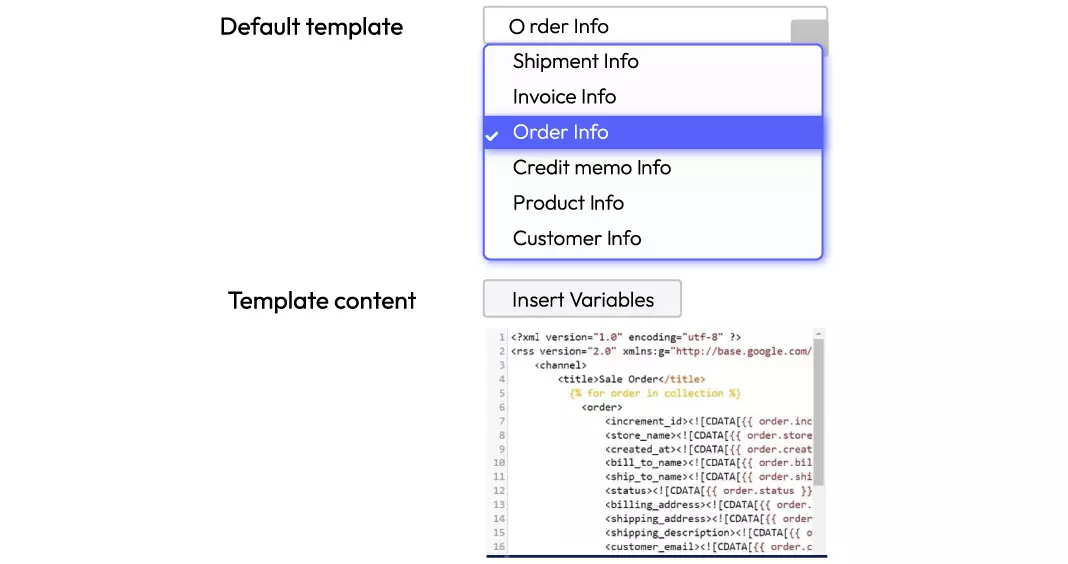
Wyomind uses a different approach. They start with a template, where you manually adapt things, but you can also choose from a variety of pre-defined attributes, which are shown in a popup.
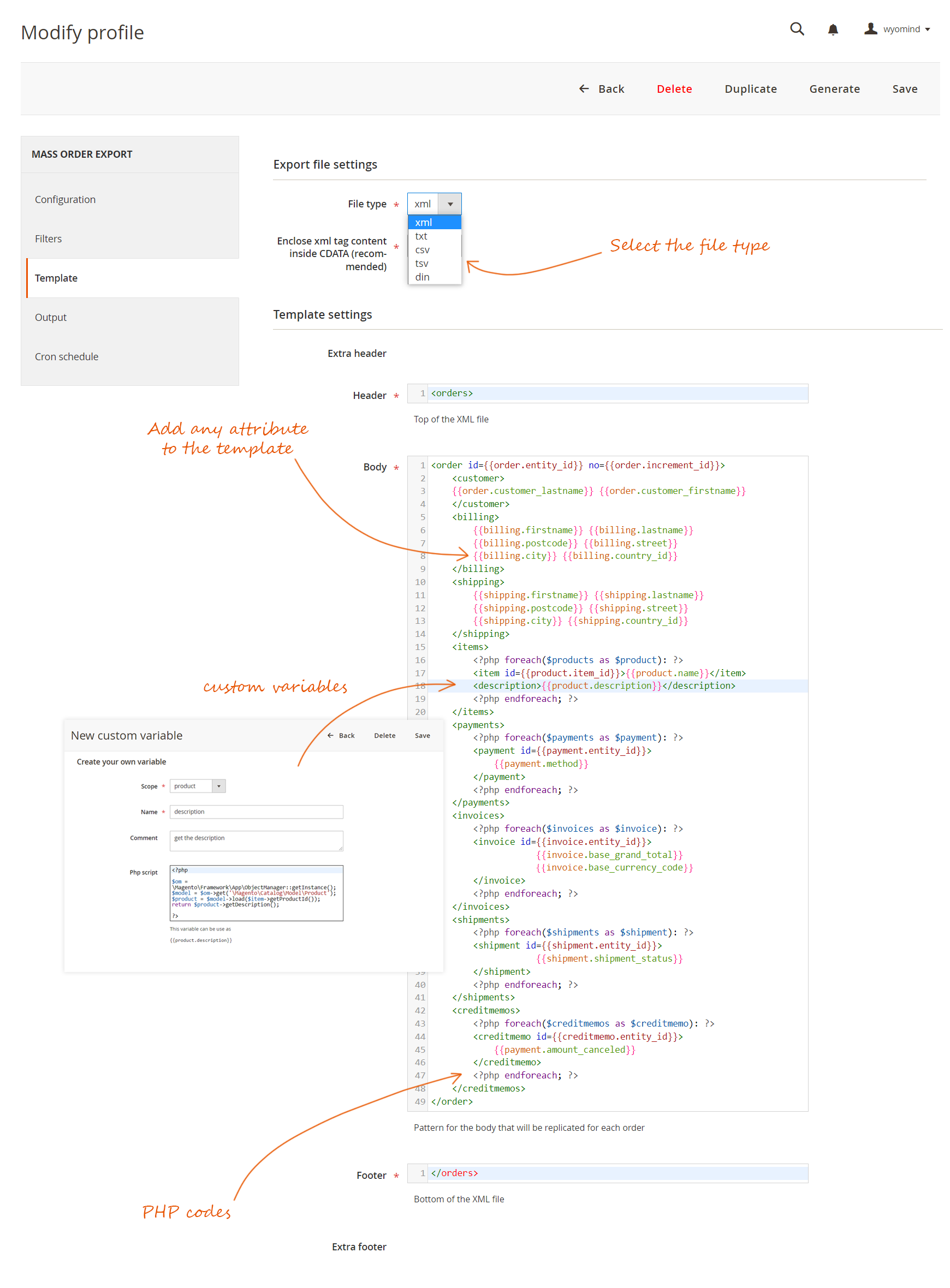
The module provided by XTENTO stands out with its highly customizable export definition capabilities, which are, on the other hand, not so easy to use. You define the export structure by defining a XSL template. There is no possibility to choose fields via checkboxes or drag and drop. You can see the possible data identifiers using a popup, where the whole tree structure of the data is shown. Hence, to know which identifier to use, you would need to look into this structure and find the correct one.
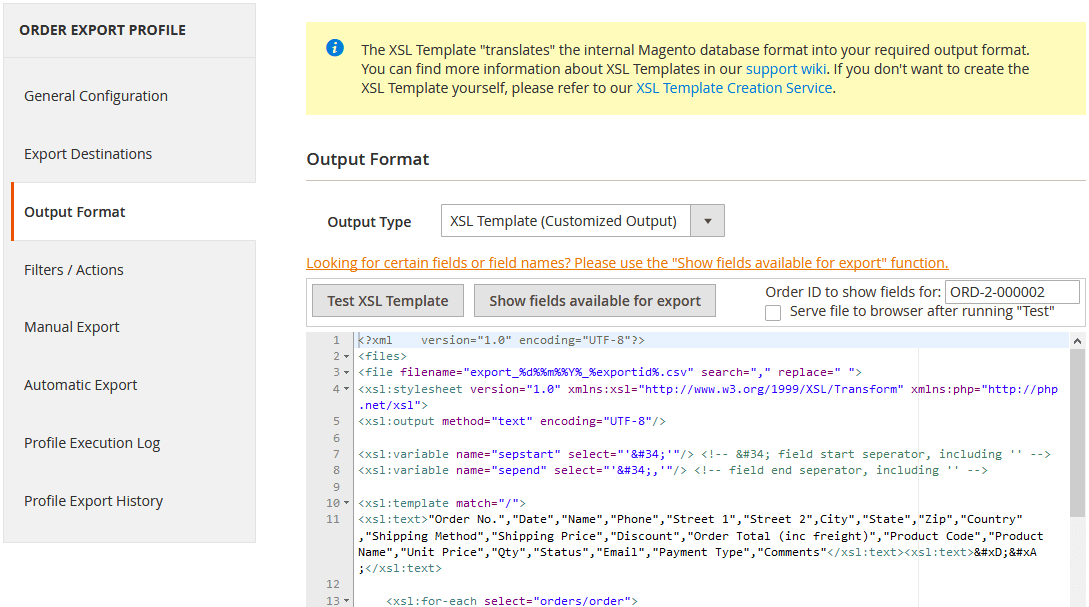
Export Filters
Amasty Export Orders can define filters based on any order entity, for example purchased items. The filtering is done via a tree structure to give a better overview. Additionally, date fields offer convenient “last X days” and “last X weeks” filtering, and modifiers can be applied to refine the data.
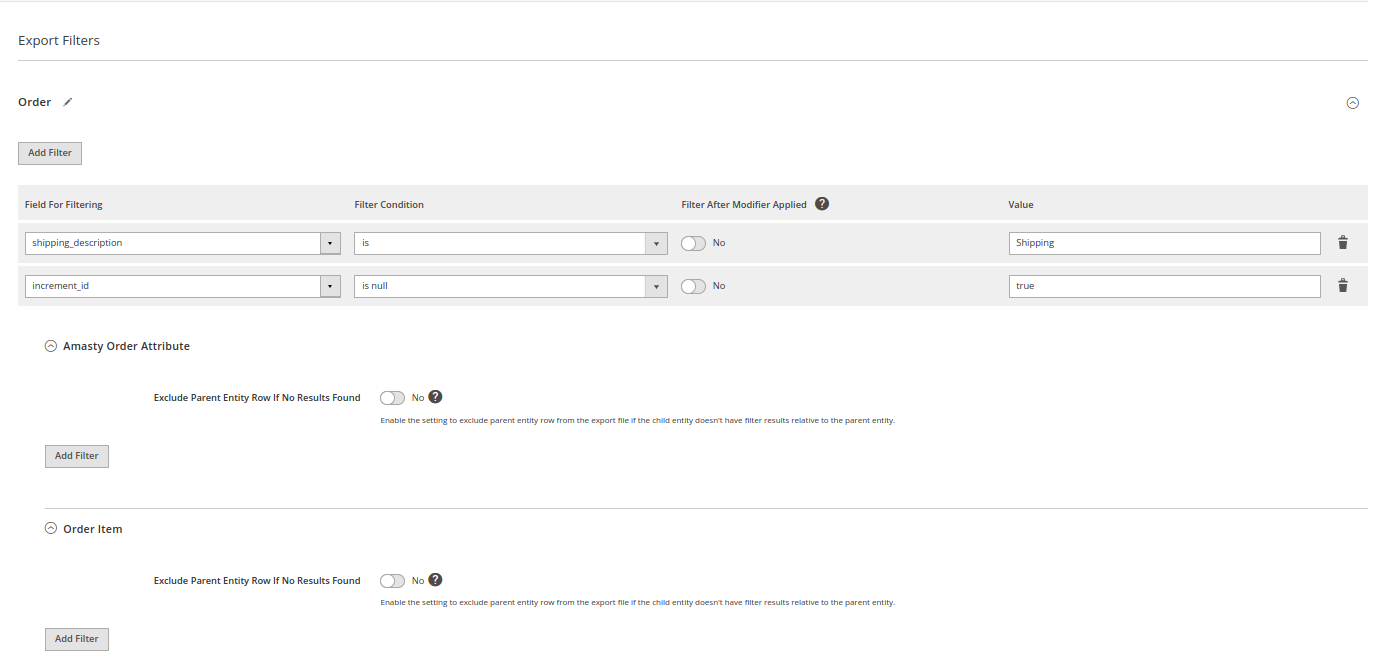
Fooman Export Orders uses the default Magento filters, which are present in the order grid. Hence, it’s not possible to filter by purchased items or other order entities, only the existing order attributes can be used.
Mageplaza Sales Exporter comes with a few easy to use pre-defined filters. You can easily filter by order status, customer group or store view. Additionally, there are filters for the creation date of the order and the order ID. If these are not enough, you have an interface like it is known from price rules to define your own filters.
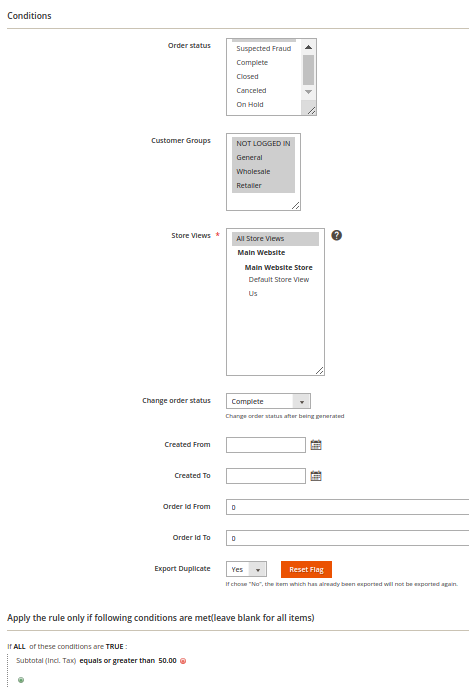
That is also the approach of Wyomind Advanced Data Export. You can use the pre-defined filters for store view, order status and customer group. Additionally, they have advanced filters, which are set up a bit unusual:
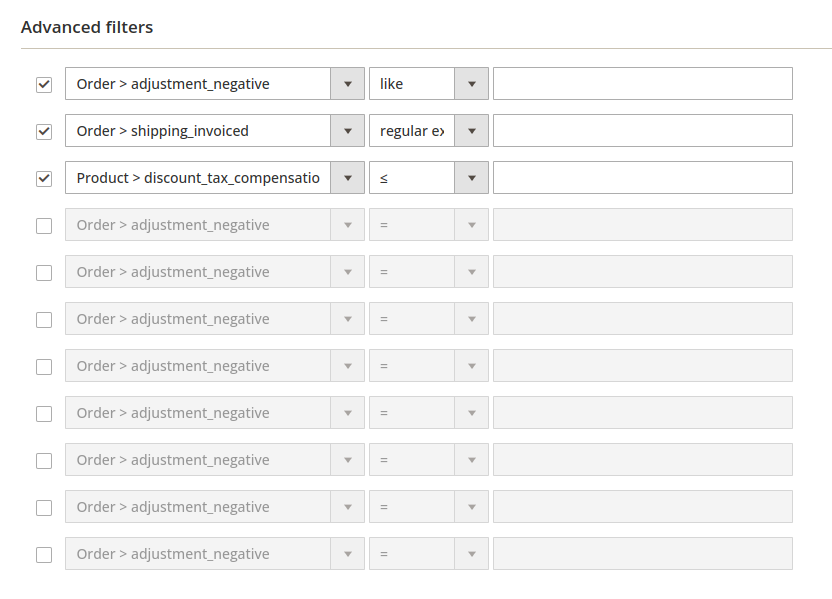
XTENTO Order Export works pretty similar like Mageplaza. There are a lot predefined filters, which can be used out of the box. An interesting approach here are filters for orders, which are created during the last X days or older than X minutes. Besides of that, you can also use the Magento way of defining filters, similar to price rules or define your filters in the XSL template itself, which makes it possible to set up very complex filters as well.
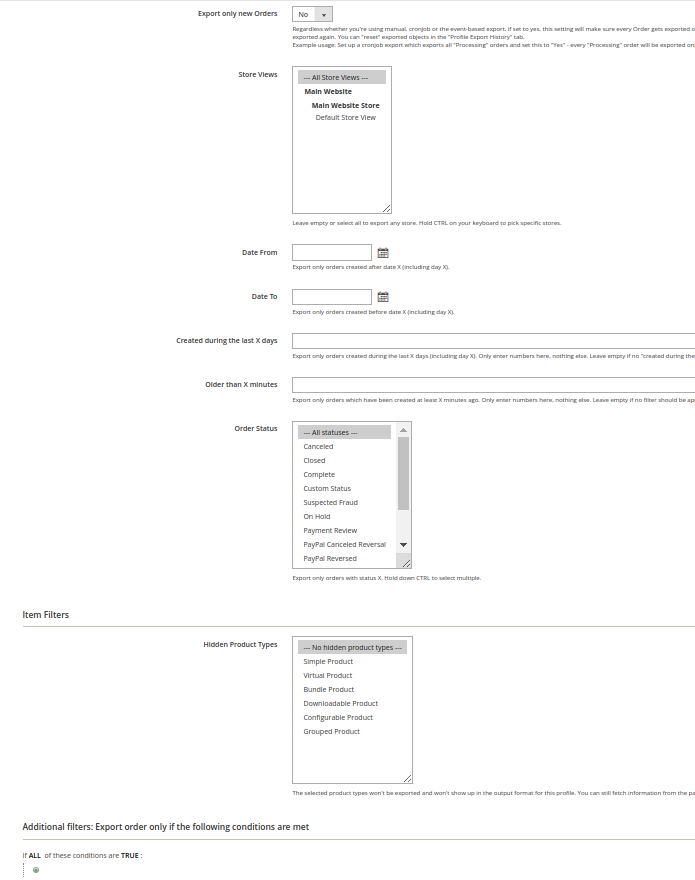
Preview Functionality
Amasty Export Orders and Fooman Export Orders do not have any preview functionality included. The only way to actually see the exported data is to download the file and open it in a spreadsheet application.
Mageplaza Sales Exporter at least has a preview, but it is not very convenient and could be improved in our eyes. They show the example data in a Notepad popup, which is either too small to actually check the data or, if you maximize it, the export definition can not be seen anymore:
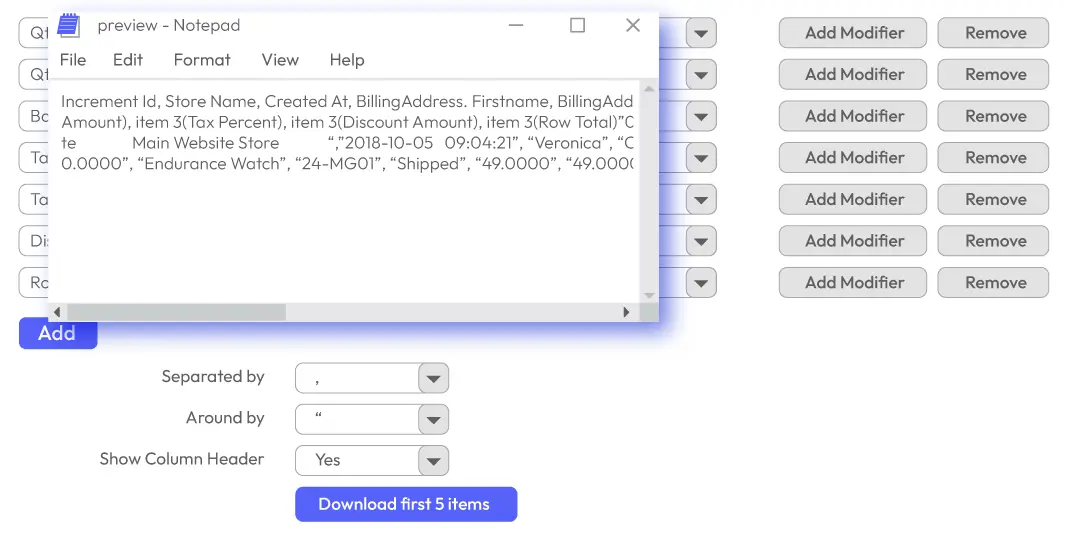
Wyomind Advanced Data Export has a popup, where usually all possible data identifiers are shown. There, you can switch to a preview mode, which looks like that:
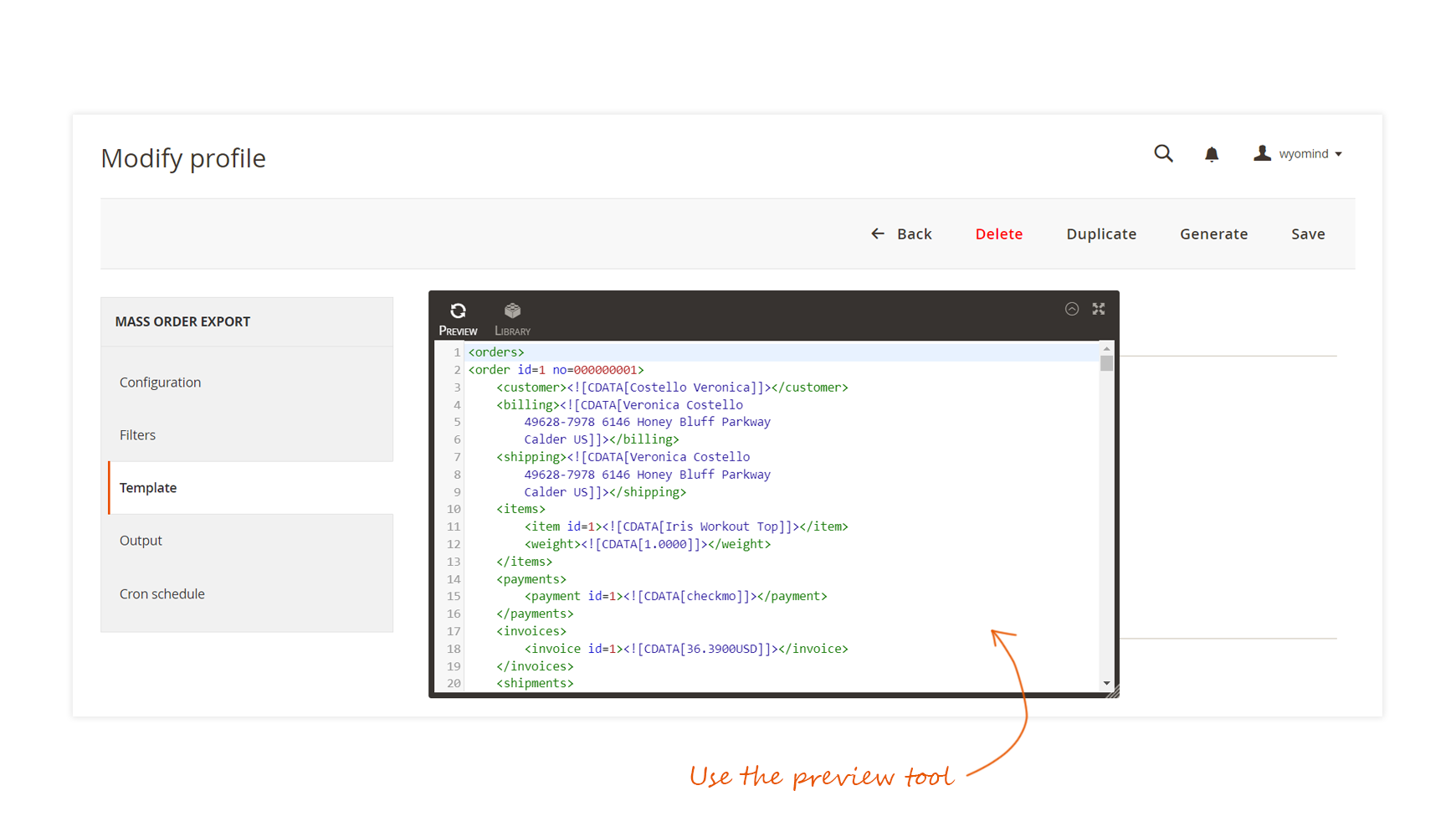
Unfortunately, it is not possible to select an entity for the preview. This is done automatically.
In our opinion, XTENTO Order Export provides the best approach here to show the result of an export definition. You can define a specific entity and test your definition. The result will be displayed in a text field below the definition:
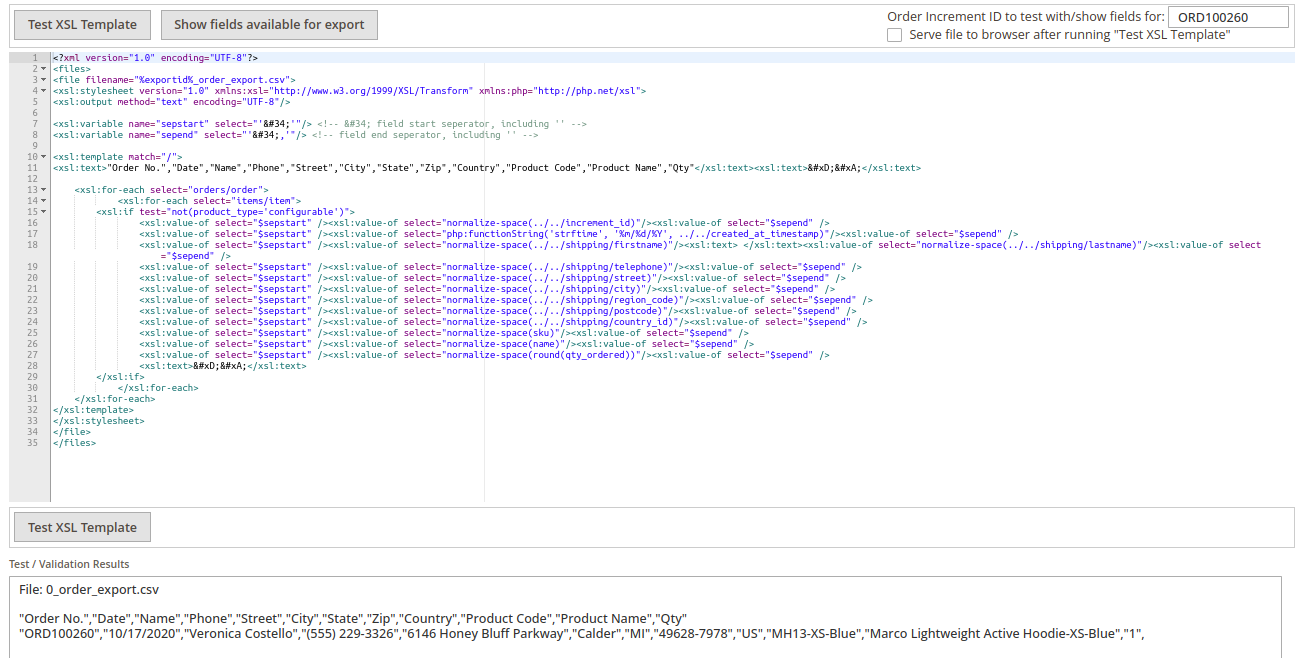
You can also download a file with only the test item included.
Automation
Amasty Export Orders lets you define automatic exports based on events or cronjobs:
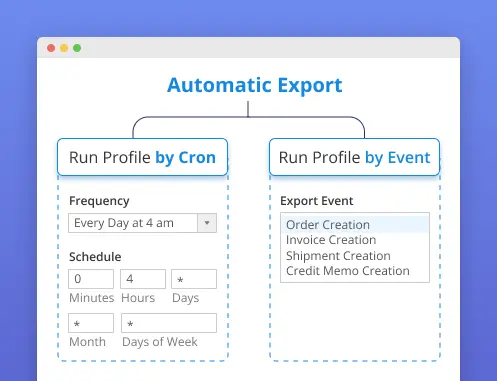
For the cronjobs, you can either use one of the predefined frequencies or define your own cron expression. These are the exact same possibilities you have for XTENTO Order Export.
Mageplaza Sales Exporter offers the possibility to use cronjobs for automation.
Wyomind Advanced Data Export has a pretty nice approach for defining automations. You get a table, where you can activate the times and weekdays, when the export should be run.
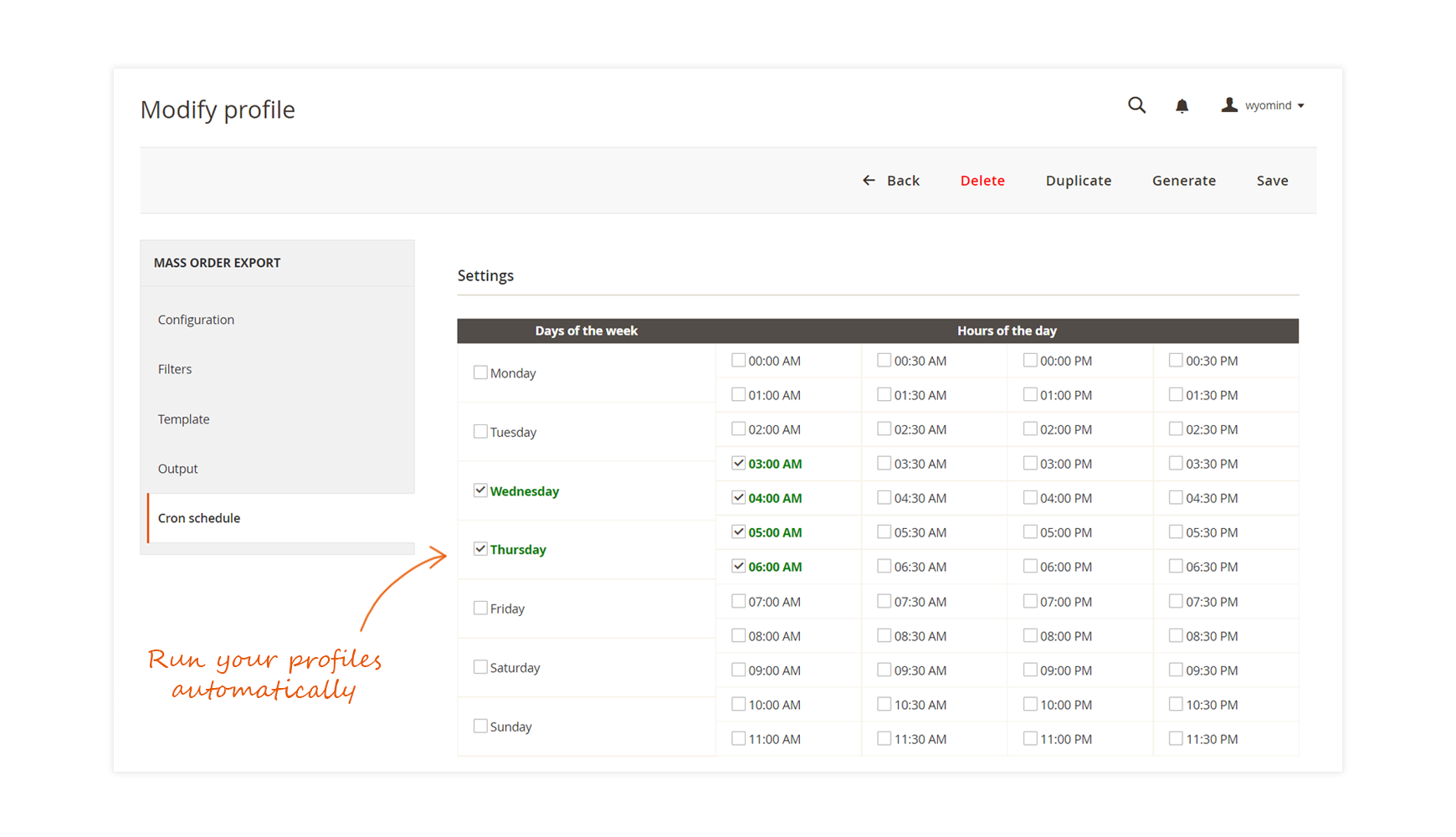
Fooman Export Orders does not come with any automation for exports. You can only manually start the export.
Export Destination
| FTP/SFTP | API Endpoint | Local Server | Dropbox | Google Drive | Custom Class | ||
|---|---|---|---|---|---|---|---|
| Amasty | ✓ | ✓ | ✓ | ✓ | ✓ | ✓ | |
| Fooman | |||||||
| Mageplaza | ✓ | ✓ | ✓ | ||||
| Wyomind | ✓ | ✓ | ✓ | ||||
| XTENTO | ✓ | ✓ | ✓ | ✓ | ✓ |
Fooman Export Orders has no destinations. You simply download the file and use it. Wyomind Advanced Data Export and Mageplaza Sales Exporter both provide the possibility to send the export to a FTP/SFTP Server or to send it via mail. Amasty Export Orders comes with a cool integration of Dropbox and Google Drive. You can directly export the file to one of these services. The most interesting approach has XTENTO Order Export. There, you can define a function in a custom class in your code base, which should be called with the exported data given as argument. This way, you could use the exported data directly in your shop again to do some further processing.
Conclusion
If you’re looking for a simple solution without any complex configuration and you only need orders to export, Fooman Export Orders is a good choice. If you need more flexibility and want to export more than just orders, Mageplaza Sales Exporter and Wyomind Advanced Data Export are good modules, as they give you more possibilities. If you need to export more complex data structures or want to export the data to specific locations, Amasty Export Orders or XTENTO Order Export might be the best choice for you.
This blog post contains affiliate links. If you buy a module via one of these links, we will get a small commission. This does not affect the price you pay for the module and also did not influence the content of this blog post. ↩︎


